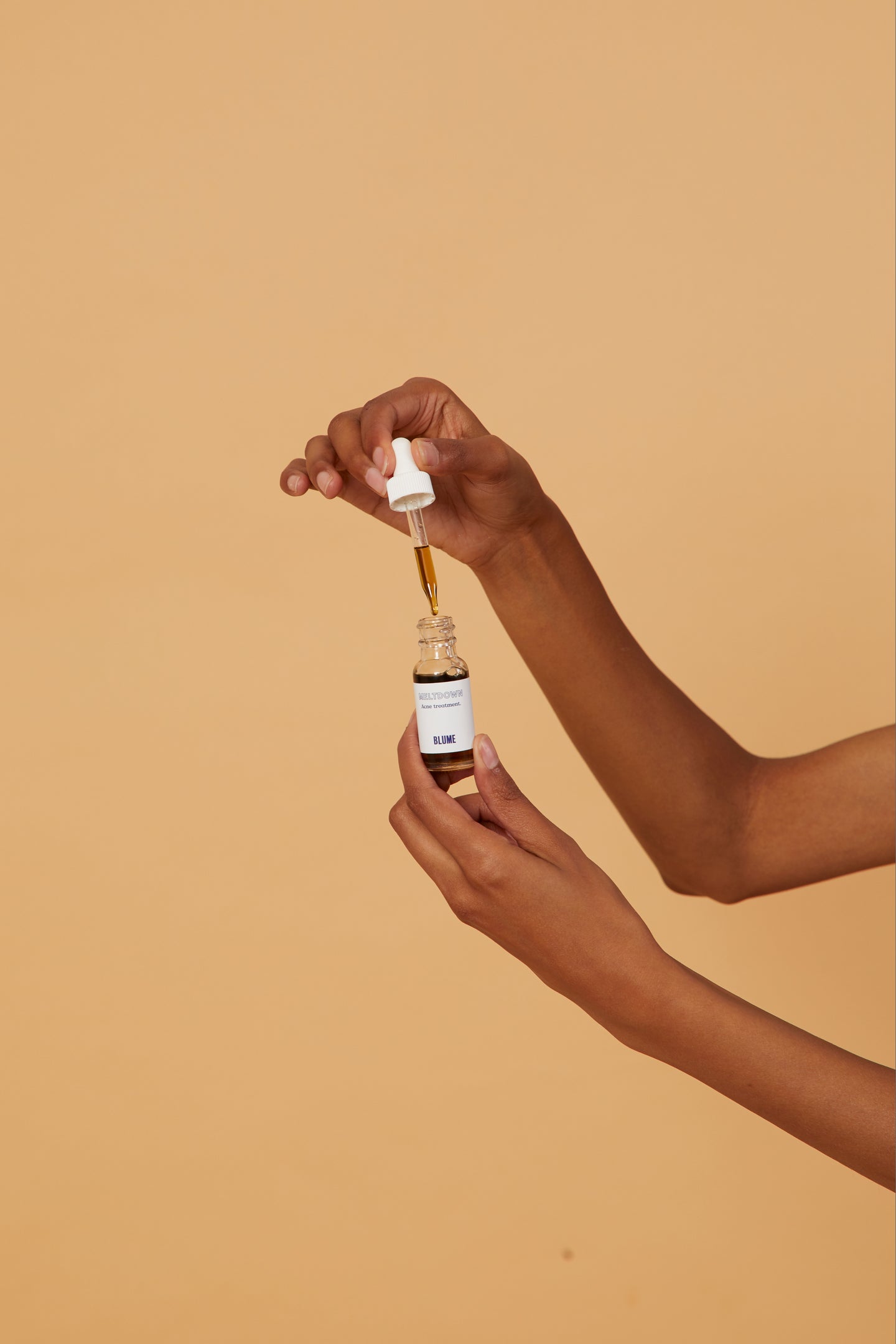Do You Actually Need Different Self-Care Products for Your Menstrual Cycle?
The answer isn’t what you’d expect.
Updated Oct 12, 2018 8:17 AM
We may earn revenue from the products available on this page and participate in affiliate programs.
The aches and pains, the feeling of being just slightly off, the cravings for peanut butter chocolate cups—no wait, potato chips: The menstrual cycle is one roller-coaster of emotions. And so, there are plenty of products that aim to make it less miserable—and they aren’t all limited to that time of the month.
While Midol or a heat compress might have been your go-to aids for period woes, now there are specific skincare products (like those from period-driven subscription service Blume) made with your cycle in mind. Even some CBD oils (like Ned’s Natural Cycle Collection) are formulated for use all month long. But is there a need for a self-care regimen designed entirely around your period? As it turns out, it’s complicated, but expanding your body literacy will go a long way. Here’s what you should know.
Tracking is the first step
“How do you know if you’re having any period-related skin changes or digestive issues or need for CBD if you don’t actually know what part of your cycle you’re in?” Kathryn Davis, MPH, a Period Educator at body literacy center LOOM, says. She recommends the Clue app, where you can also document your energy levels and skin condition. After keeping a log for about three months or so, Davis says you can expect to notice patterns—and they might not be what you’d anticipate.
PMS isn’t everything
You probably most associate mood swings, breakouts, and chocolate cravings with PMS, the time right before your period. But there are major hormonal shifts that happen during other points of your cycle that can cause these changes as well. As Davis explains, there are four phases of the menstrual cycle: bleeding (aka, your period), the follicular phase, ovulation, and the luteal phase (which lasts anywhere from 11 to 16 days).
“There’s actually a big, big shift around ovulation until the luteal phase. Once I started tracking my cycle, I noticed, ‘Oh wait, I actually don’t really break out right before my period—I get a ton of breakouts right around ovulation,’” she says. That Midol or face mask might not be working because you’re using it at the wrong time for what’s going on in your body.
Hormone imbalances are common
Realized you tend to feel tired at the same point in your cycle every month? It probably has to do with hormones. Davis explains that at the end of your follicular phase, estrogen and luteinizing hormone spike, and then drop during ovulation, at which point some testosterone builds, then decreases. Finally, once the luteal phase begins, progesterone increases. So basically, there’s a lot going on a full two weeks before your period even starts.
These changes can have a big impact on your mood—after all, each hormone causes different feelings. When energizing estrogen builds in the follicular phase, Davis says it’s a great time to start a new project. On the other hand, you might feel more sluggish during your luteal phase because progesterone is a natural relaxant. When you start tracking your cycle, you’ll start noticing which hormone shifts most affect your feelings and skin, as they can vary depending on the person.
If you’re looking for a little extra emotional support, herbal treatments, like Ned’s Hormone Balance Blend Oil, can help. “Many of the ingredients, like red raspberry leaf and stinging nettles, have long histories in supporting the endocrine system,” says Brittany Weeden, curator of Ned’s Natural Cycle Collection. “They help keep it balanced, which then reduces the severity of symptoms.”
Period-driven breakouts are inevitable, but they can be kept to a minimum when you treat them proactively. “For some people, like me, hormonal acne is very real,” says Blume cofounder Bunny Ghatrora. “It can’t be fully avoided using just topicals [Editor’s note: Although sometimes prescription medication is necessary to fully fight it], but I always find the best way to manage mine is by being extra diligent with my skin routine and drinking a lot of water.” Blume’s Meltdown acne oil was formulated to be used right before you feel a pimple coming on.
Prevention is key
While you might have the worst aches, mood swings, or acne flare-ups during your period, keeping in touch with your body 24-7 can help make it more manageable. “As a teenager, I was always reactive when it came to period pain. I’d take two painkillers every time I felt the cramps start, and I’d sometimes be in so much pain I’d head home early from school or work, which was embarrassing,” says Blume cofounder Taran Ghatrora. “Over the last few years, my cramps have lessened, and it’s because I’ve become much more proactive about my health overall—drinking more water, moving regularly, avoiding sugar, and keeping Cloud 9 (a PMS oil with essential oils like clary sage and peppermint) on deck for when cramps hit.”
“It’s important that we nurture ourselves each and every day, not just when we’re experiencing discomfort,” says Weeden. “Any issue in our bodies, from premenstrual symptoms to skin conditions, often indicates that one or more of our biological systems are out of balance.”
When you have a better understanding of what’s actually going on in your body, you can know how to best treat it. When in doubt, talk to your doctor—and yes, feel free to buy yourself that pint of ice cream too.
See more wellness: Adding This Supplement to Your Routine Could Help You Get More Z’s You Don’t Need to Log 10,000 Steps Each Day to Sleep Well—This Is Plenty What Happens to Your Body When You Don’t Get Enough Sunlight
